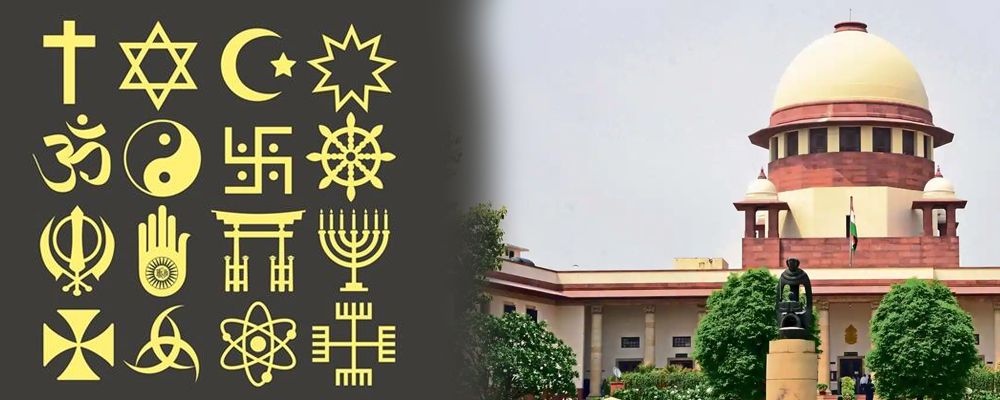A PIL was filed by Devkinandan Thakur to identify minorities at the district level for granting benefits under Article 29 and 30 of the constitution.
According to the petition filed, in 1993 The Govt. of India declared Muslims, Sikhs, Buddhists, Parsis and Jains as a minority at the national level which was irrational and contrary to Articles 14, 15, 21, 29 and 30 of the Constitution.
On October 23, 1993, the Ministry of Welfare of the Govt. of India identified these five religions as “minority communities” under Section 2 (c) of the National Commission for Minorities Act, 1992. The PIL also challenges the validity of Section 2(c) of the National Commission for Minorities Act, 1992, under which such a declaration was made by the Govt. of India. According to the petitioner, Section 2 (c) of the NCM Act of 1992, gives “unbridled power to the Center ” to declare’ minorities’ is arbitrary, unbridled and contrary to the provisions of the Constitution.
It was mentioned in the petition that there are 1% Hindus in Ladakh, 2,75% in Mizoram, 2.77% in Lakshadweep, 4% in Kashmir, 8.74% in Nagaland, 11.52% in Meghalaya, 29% in Arunachal Pradesh, 38.49% in Punjab, 41,29% in Manipur, however the Central Govt. has not declared them as a minority.
Need A Legal Advice
The internet is not a lawyer and neither are you. Talk to a real lawyer about your legal issue

On the other hand, Muslims who have been declared as minority have a population of around 96.58% in Lakshadweep, 95% in Kashmir, 46% in Ladakh. Similarly, Christians who have a share of population of 88.10% in Nagaland, 87.16% in Mizoram and 79.59% in Meghalaya are also declared as a minority. Also, Sikhs are 57.69% in Punjab while Buddhists are 50% in Ladakh. These minorities can establish and administer an institution of their own choice under Article 30 of the Constitution.
The judgment given in the TMA Pai Case (2002) was also mentioned, according to which the state shall be given the authority to determine the linguistic as well as a religious minority.
The petitioner demands that the Union Government shall define ‘minority’ and also shall lay down ‘guidelines for identification of minorities at the district level’, so that only those religious as well as linguistic groups who are socially, economically, politically non dominant and are very less in numbers, can get the benefits and protections guaranteed under Article 29-30.
It should also be noted that Ashwini Upadhyay also filed a similar PIL challenging the provisions of the NCM Act and NCMEI Act to ensure the minority status of Hindus in states and UTs where they are in the minority. The Center in reply to the said petition mentioned that the Hindus can be declared as minority by the respective state Govt., however, later, the Central Govt changed its stand and filed an affidavit stating that the Central Govt has the power to notify the minorities, however it can only be decided after discussions with the respective state Govt. and the other stakeholders for avoid “unintended complications in future”.
On May 10th the SC expressed its disappointment with the Central Govt for changing its position and provided a time of 3 months to file a report on the process decided with the state govt.





 Talk to a Lawyer
Talk to a Lawyer